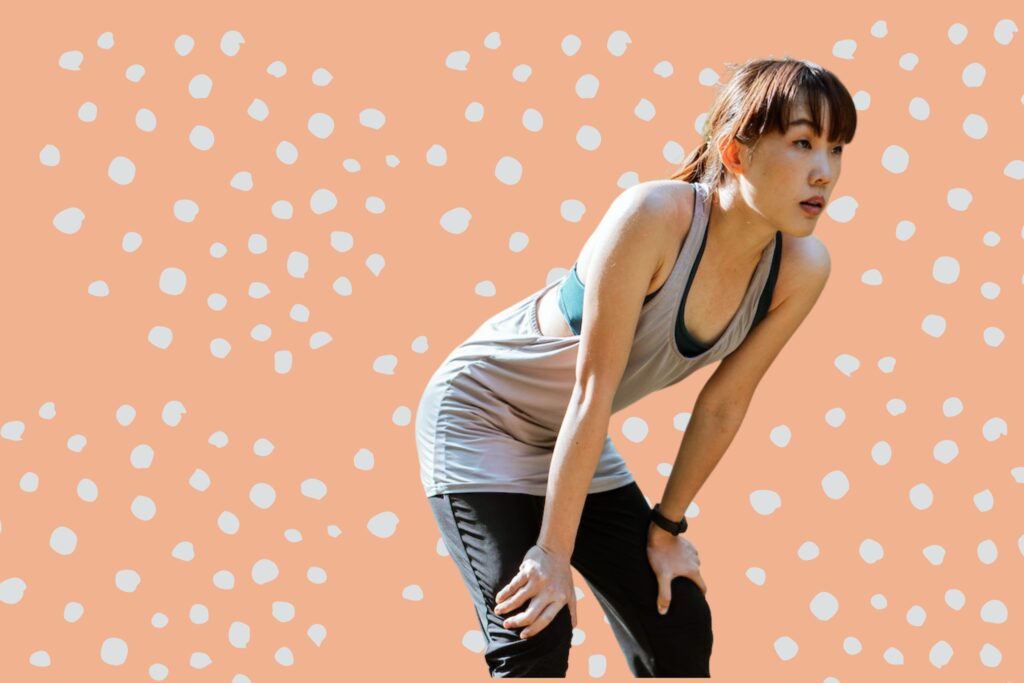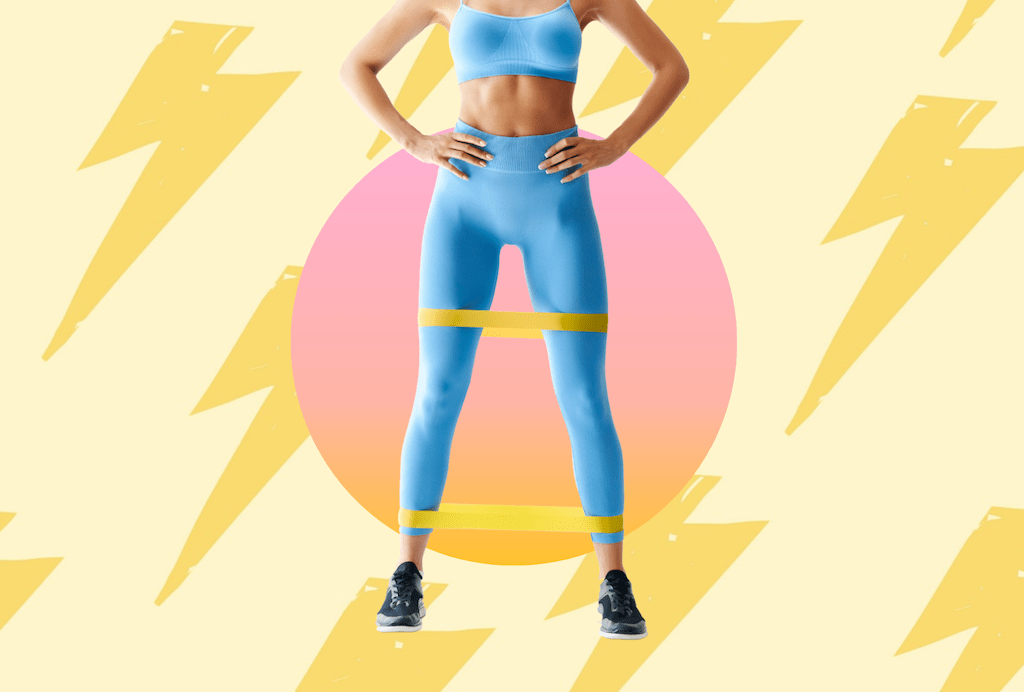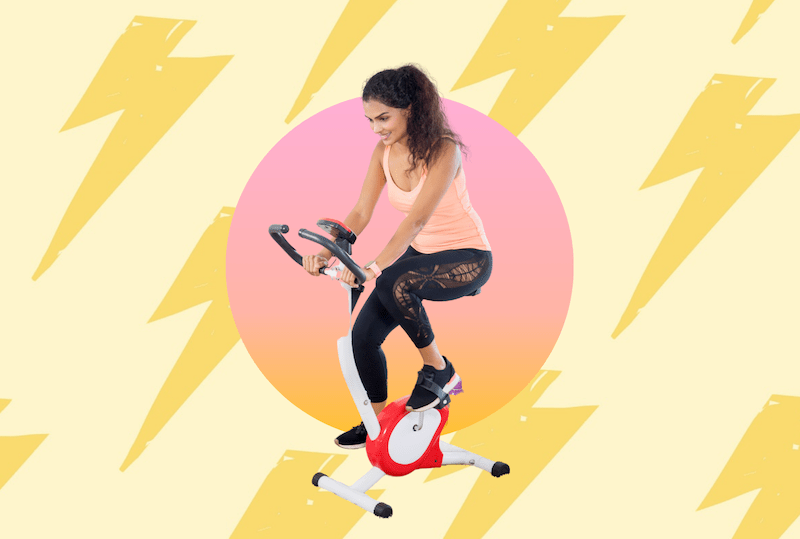Knee pain can be a real nuisance, making everyday activities like walking, climbing stairs, and even sitting downright uncomfortable.
Did you know that, according to a report published by Versus Arthritis, approximately 1 in 5 adults over the age of 45 in England suffer from osteoarthritis of the knee? That’s right, folks – knee pain is no laughing matter, with prevalence rates ranging from around 15% to 21% across local authorities in England. And if that wasn’t enough to make you wince, the rate of knee replacements in local authority areas ranges from 1/1,000 to a staggering 6/1,000 people over 45 years old. Ouch!
But fear not, my fellow knee-creaking compatriots, for there is hope on the horizon. With the right exercises and a little bit of dedication, you too can join the ranks of those who have conquered – or at least managed – their knee pain and emerged victorious. Or, if not victorious, then at least not hobbling…
Anyway, today we’ve teamed up with St Vincent’s, who specialise in revision total knee replacement surgery, to share some of the best exercises to relieve knee pain and strengthen those all-important knee joints. Hopefully it won’t, of course, come to that…
Quadriceps Stretch
Why it’s effective: The quadriceps are a group of four muscles located at the front of your thigh, and they play a crucial role in supporting your knee joint. Tight quads can contribute to knee pain, so stretching them regularly is essential for maintaining flexibility and preventing discomfort.
How to do it: Stand next to a wall or use a chair for support. Bend your right knee and grab your right foot with your right hand. Gently pull your foot towards your buttocks until you feel a stretch in the front of your thigh. Hold for 20-30 seconds, then switch legs. Repeat 3-4 times on each side.
Quad stretches can also be done lying on your side or in a prone position.

Hamstring Stretch
Why it’s effective: Just like tight quads, tight hamstrings (the muscles at the back of your thigh) can also lead to knee pain. Stretching these muscles helps to maintain flexibility and reduce strain on the knee joint.
How to do it: Sit on the floor with your legs extended in front of you. Slowly lean forward from your hips, reaching for your toes or ankles. Hold for 20-30 seconds, then return to the starting position. Repeat 3-4 times.
Hamstring stretches can also be done lying on your back, lent against a wall, sitting on a chair and more.
Calf Raises
Why it’s effective: Strong calf muscles help to stabilise the knee joint and reduce stress on the knee. Plus, who doesn’t want toned calves?
How to do it: Stand with your feet hip-width apart and hold onto a wall or chair for balance. Slowly lift your heels off the ground, rising onto your toes. Hold for a moment, then lower your heels back down. Repeat 10-15 times for 3 sets, focusing on the correct form; essential for avoiding aggravating any issues you might have with your knees.
Wall Sits
Why it’s effective: Wall sits are an excellent way to strengthen your quadriceps without putting too much strain on your knees. The stronger your quads, the better they can support your knee joint and reduce pain.
How to do it: Stand with your back against a wall and your feet shoulder-width apart. Slowly slide down the wall until your knees are bent at a 90-degree angle (or as close as you can comfortably manage). Hold this position for 20-30 seconds, then slowly stand back up. Repeat 3-4 times.


Clamshells
Why it’s effective: Clamshells target the gluteus medius, a muscle located on the side of your hip. Strengthening this muscle helps to improve hip stability and reduce strain on the knee joint.
How to do it: Lie on your side with your legs bent at a 90-degree angle and your feet together. Keeping your feet touching, lift your top knee as high as you can without moving your pelvis. Lower your knee back down and repeat 10-15 times on each side for 3 sets.
Straight Leg Raises
Why it’s effective: Straight leg raises work your quadriceps while minimising stress on the knee joint, making them perfect for those with knee pain.
How to do it: Lie on your back with one leg bent and the other straight. Tighten your thigh muscles and slowly lift the straight leg about 12 inches off the floor. Hold for a few seconds, then lower it back down. Repeat 10-15 times on each side for 3 sets.
Read: 7 of the best no equipment home exercises to strengthen your abs and core
Resistance Band Exercises
Why it’s effective: Resistance band exercises can help strengthen the muscles surrounding the knee joint, including the quadriceps and hamstrings. This added strength can provide extra support to the knee and reduce pain.
How to do it: Place the resistance band around your ankles and stand with your feet shoulder-width apart. Step to the side with one foot, keeping tension on the band. Bring your other foot in to meet the first foot. Repeat 10-15 times in one direction, then switch sides and repeat for 3 sets.
Another exercise you can try with the resistance band is to lie on your back with the band around the bottom of one foot. Straighten your leg and lift it towards the ceiling, keeping tension on the band. Lower your leg back down and repeat 10-15 times on each side for 3 sets.

Step-Ups
Why it’s effective: Step-ups are a great exercise to strengthen your quadriceps and glutes while also improving your balance and coordination. It can also be easily modified to increase or decrease the difficulty level based on your fitness level.
How to do it: Find a sturdy step, bench or platform that is about knee height. Step up onto the platform with one foot, pressing through your heel to lift your body up. Bring your other foot up to meet the first foot on the platform, then step back down with the same foot you started with. Repeat 10-15 times on each side for 3 sets. To increase the difficulty, you can hold a pair of dumbbells in your hands or increase the height of the platform.
Lunges
Why it’s effective: Lunges work multiple muscles in your legs including your quadriceps, hamstrings, and glutes. Additionally, lunges help to improve your balance and stability, which can reduce the risk of falls.
How to do it: Start by standing with your feet hip-width apart. Take a big step forward with one foot and bend both knees until they form 90-degree angles. Make sure your front knee does not extend past your toes. Push through your front heel to stand back up and return to the starting position. Repeat on the other side and continue alternating for 10-15 repetitions for 3 sets.
As with the step-ups, you can hold dumbbells in your hands while performing the lunges for an added challenge.
Read: 8 dumbbell exercises you can do from home for a full-body workout

Stationary Bike
Why it’s effective: Cycling on a stationary bike is a low-impact exercise that can help improve the strength and flexibility of your knee joint. It can also help increase blood flow to the joint which promotes healing and reduces inflammation.
How to do it: Adjust the seat height so that your feet can comfortably reach the pedals with a slight bend in your knees. Begin cycling at a moderate pace for 10-15 minutes and gradually increase the duration and intensity as you build up your endurance. Aim for at least 30 minutes of cycling per session, 3-4 times a week. If you experience any pain or discomfort during the exercise, adjust the resistance or stop the exercise altogether.
The Bottom Line
There you have it – 10 knee-friendly exercises that can help relieve pain and strengthen those all-important joints. We can’t wait to see you striding with confidence soon!
In addition to these exercises, some individuals find relief from knee pain through dietary supplements. Glucosamine and chondroitin are popular choices known for their joint-supporting properties. MSM supplements, with their anti-inflammatory benefits, can also support joint health. Additionally, omega-3 fatty acids and turmeric are often recommended for their ability to reduce inflammation and promote overall joint function.
It’s important before adding any new supplements to your fitness routine, however, to consult with your healthcare provider .
*Before attempting any exercises or following any recommendations mentioned in this blog, it is essential to consult with your GP, physiotherapist or a qualified healthcare professional. Each individual’s situation is unique, and your GP will be able to provide personalised advice based on your specific needs and medical history.
Please note that the exercises and tips shared in this blog are not meant to replace any prescribed treatments or therapies recommended by your healthcare provider. Always follow your assigned health professional’s advice and guidance when it comes to managing your knee pain and overall health.*





